Exercise Daily – In recent years, the sports industry has witnessed a significant transformation with the integration of artificial intelligence (AI) technology. AI has revolutionized the way we track and analyze athlete performance, providing invaluable insights to coaches, trainers, and athletes themselves. We can see the impact of AI in sports, highlighting how it is reshaping the landscape of sports performance tracking.
AI refers to the simulation of human intelligence in machines that are programmed to learn and make decisions. In the context of sports, AI is utilized to analyze vast amounts of data collected from various sensors, wearables, and video recordings. This technology enables real-time analysis, prediction, and actionable insights that can enhance athletic performance.
Sports have always been a field where human performance is constantly pushed to its limits. Athletes strive for greatness, aiming to surpass their previous achievements and reach new milestones. In recent years, the integration of artificial intelligence (AI) in sports has revolutionized the way we track and enhance athlete performance.
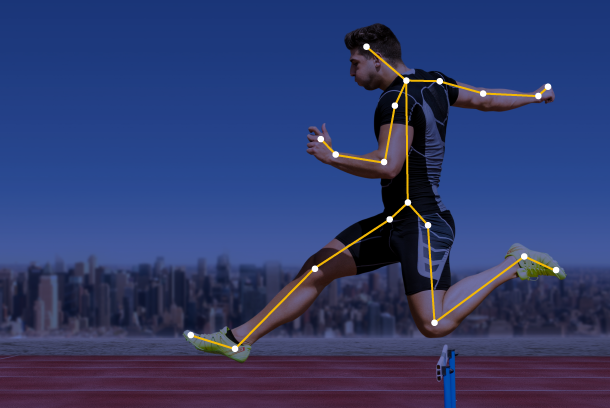
The Role of Artificial Intelligence in Sports
AI is transforming the sports industry by providing advanced data analysis, performance tracking and prediction, and injury prevention and rehabilitation capabilities.
1. Enhancing Data Analysis
AI algorithms can process vast amounts of data, allowing coaches, trainers, and athletes to gain valuable insights into performance metrics. From analyzing player statistics to evaluating game strategies, AI-powered systems enable teams to make data-driven decisions.
Artificial intelligence (AI) has revolutionized the sports industry, transforming the way sports are played, analyzed, and enjoyed. The future of sports lies in the applications of AI and machine learning, which have become increasingly prominent across various sports. From personalized training programs to advanced data analysis, AI is changing the sports landscape.
AI systems are now being used in sports organizations and businesses, enhancing performance and decision-making processes. The power of AI can be witnessed in sports journalism, as it enables comprehensive and real-time analysis of matches using video and computational intelligence. AI is also employed to develop innovative use cases such as AI referees, scouting techniques, and even AI bots.
2. Performance Tracking and Prediction
AI technologies such as computer vision and machine learning algorithms enable accurate tracking of athlete movements and performance metrics. This data can be used to identify patterns, detect weaknesses, and predict future performance. Coaches can leverage this information to tailor training programs and optimize performance.
The integration of AI has not only improved performance but also impacted areas such as sports medicine, injury prevention, and the development of AI-powered diet plans. By adopting AI and statistical modeling, sports have become more data-driven, precise, and competitive.
AI’s potential applications in sports are vast, and its impact is changing the way we approach and analyze sports. From improving scouting techniques to enhancing performance and predicting outcomes, AI is revolutionizing the sports industry and playing a pivotal role in its advancement. The use of AI in sports has also expanded to areas such as sports technology and the overall fan experience.
With AI’s ability to analyze vast amounts of data and identify patterns, it has transformed the way sports companies and organizations analyze sports and make informed decisions. The introduction of artificial intelligence in sports has made sports more captivating, accurate, and engaging for fans worldwide. It is evident that AI is changing the way sports are perceived and played, and its influence will continue to shape the future of the sports industry.
3. Injury Prevention and Rehabilitation
AI plays a crucial role in athlete health management. By monitoring various parameters, such as heart rate, body temperature, and fatigue levels, AI systems can identify potential injury risks. Furthermore, AI can assist in designing personalized rehabilitation programs, helping athletes recover faster and reduce the chances of re-injury.
As we look into the future of sports, AI applications and machine learning are transforming the way sports approach and address injuries. AI systems are being used in various sports to analyze player data and provide personalized training programs that help prevent injuries.
By using AI and machine learning algorithms, sports organizations can identify patterns and risk factors associated with injuries, allowing them to develop proactive strategies for injury prevention. Additionally, AI is employed in rehabilitation processes, leveraging its power to analyze vast amounts of data and provide real-time feedback for athletes recovering from injuries.
AI technologies, including video analysis and computational intelligence, enable precise tracking and monitoring of body parts in each video frame, aiding in the rehabilitation process. This integration of AI has transformed the way injuries are managed in the sports world.
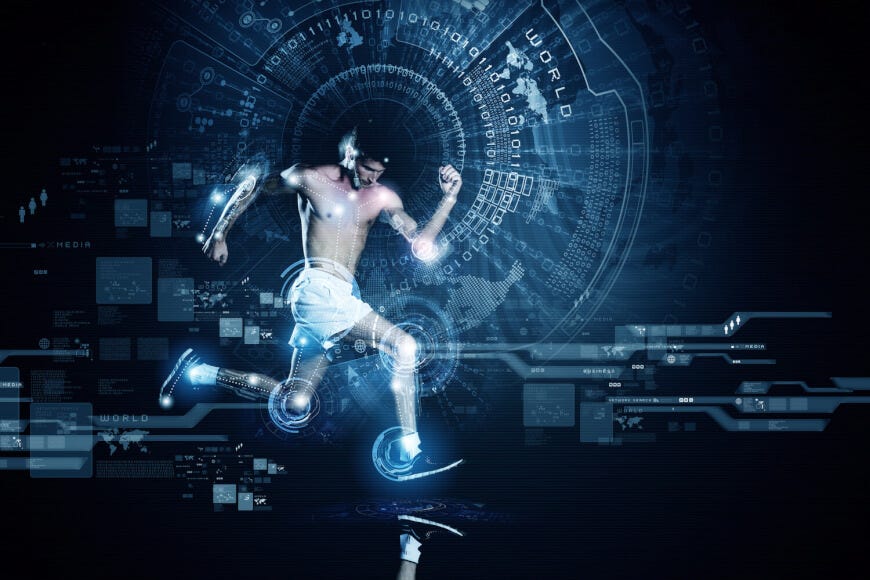
Advanced Tracking Technologies
Several advanced tracking technologies powered by AI are transforming the way we collect and analyze data in sports.
1. Wearable Devices
Wearable devices equipped with sensors and AI algorithms provide real-time data on an athlete’s physiological parameters, including heart rate, body temperature, and oxygen levels. These devices offer valuable insights into an athlete’s physical exertion, helping optimize training intensity and minimize the risk of overexertion.
2. Video Analysis
AI-based video analysis systems can automatically track and analyze athlete movements during training or competition. These systems help identify technique flaws, evaluate game strategies, and provide valuable feedback for performance improvement.
3. Sensor Technology
Sensor technology integrated into sports equipment, such as basketballs or tennis rackets, can capture and analyze data on ball speed, spin rate, and impact force. This information aids in assessing an athlete’s technique and optimizing their gameplay.
![]()
AI and Training Programs
AI-powered training programs are revolutionizing the way athletes prepare for competition.
1. Customized Workouts
AI algorithms analyze an athlete’s performance data and physiological parameters to create personalized training programs. These programs consider individual strengths, weaknesses, and recovery patterns, maximizing training efficiency and minimizing the risk of overtraining.
2. Real-Time Feedback
AI systems can provide real-time feedback on an athlete’s technique, form, and performance during training sessions. This instant feedback allows athletes to make adjustments and improve their skills more efficiently.
3. Virtual Coaches
AI-powered virtual coaches offer personalized guidance and support to athletes. These virtual assistants can analyze performance data, provide training recommendations, and even simulate game scenarios for strategic development.
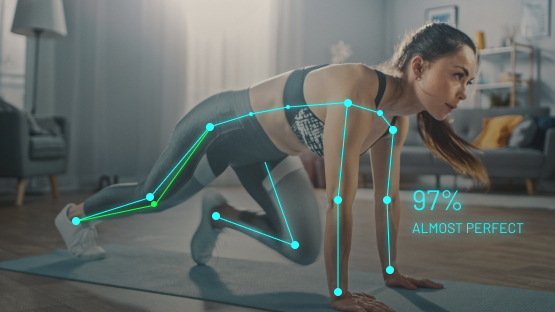
Improving Team Performance
AI has a significant impact on team performance optimization and strategic decision-making.
1. Tactical Analysis
AI algorithms analyze vast amounts of game footage to identify patterns, tendencies, and weaknesses in both individual players and opposing teams. This information helps coaches develop effective game strategies and make informed tactical decisions.
2. Game Strategy Optimization
AI-powered systems provide real-time analysis of game data, including player positions, movement patterns, and game dynamics. Coaches can use this information to make in-game adjustments and optimize team strategies.
3. Player Scouting
AI algorithms can process player statistics, scouting reports, and game footage to identify potential talents for team recruitment. This streamlined scouting process enables teams to discover promising players more efficiently.
AI in Training and Performance Analysis
1. Virtual Coaching and Personalized Training Plans
AI-powered virtual coaching systems have emerged as valuable tools for athletes of all levels. These systems leverage machine learning algorithms to analyze an athlete’s strengths, weaknesses, and training goals. Based on this analysis, personalized training plans can be created, taking into account factors such as the athlete’s performance history, physiological data, and injury risk assessment. Virtual coaching platforms provide athletes with guidance, feedback, and motivation, improving training efficiency and overall performance.
2. Performance Tracking and Analysis
AI algorithms enable advanced performance tracking and analysis. Wearable devices equipped with sensors collect data on various parameters, including heart rate, speed, distance covered, and biomechanical movements. This data is then processed using AI algorithms to generate valuable insights about an athlete’s performance. Coaches and athletes can monitor progress, identify areas for improvement, and make data-driven decisions to optimize training strategies.
3. Injury Prevention and Rehabilitation
AI plays a crucial role in injury prevention and rehabilitation. By analyzing biomechanical data and monitoring an athlete’s movements, AI algorithms can detect patterns that may lead to injuries. Athletes and coaches receive real-time alerts and recommendations to modify training techniques and prevent potential injuries. Additionally, AI-assisted rehabilitation programs provide personalized exercises and recovery plans, ensuring safe and efficient recovery from injuries.
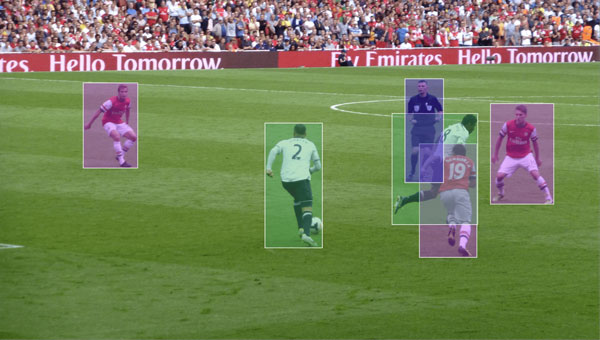
AI in Sports Equipment and Wearables
1. Smart Clothing and Wearable Devices
Smart clothing and wearable devices embedded with AI technologies are transforming the sports equipment industry. These innovative solutions can monitor an athlete’s vital signs, body movements, and exertion levels. The data collected helps athletes optimize their training intensity, avoid overexertion, and prevent injuries. Additionally, smart clothing provides real-time feedback on posture, technique, and muscle activation, aiding athletes in refining their movements and achieving optimal performance.
2. Advanced Sports Equipment
AI is also revolutionizing sports equipment, making it smarter and more responsive. For example, in tennis, AI-powered rackets can analyze swing patterns, ball impact, and player movement, providing instant feedback on technique and strategy. Similarly, in soccer, smart balls equipped with sensors can track ball trajectory, spin, and speed, aiding players in analyzing their shots and improving accuracy. These advancements in sports equipment enhance athletes’ performance and enable them to gain a competitive edge.
AI in Game Strategy and Decision Making
1. Real-time Performance Monitoring
AI enables real-time performance monitoring during training sessions and competitions. Through the integration of sensors and cameras, AI systems can capture and analyze data on player movements, ball trajectories, and game dynamics. Coaches and athletes receive live insights, allowing them to make instant adjustments to strategies and tactics.
2. Predictive Analytics and Game Planning
AI algorithms leverage historical and real-time data to generate predictive analytics for game planning. These algorithms analyze vast amounts of data, including player statistics, opponent analysis, and historical game outcomes. By identifying patterns and correlations, AI systems provide coaches with valuable insights for developing effective game strategies and making data-driven decisions.
AI in Sports Medicine and Biomechanics
1. Injury Diagnosis and Treatment
AI has significantly contributed to advancements in sports medicine and injury diagnosis. With the help of machine learning algorithms, AI systems can analyze medical images, such as MRI scans, to detect and diagnose sports-related injuries accurately. AI algorithms can also assist in treatment planning and rehabilitation protocols, ensuring personalized care for athletes.
2. Biomechanical Analysis and Optimization
By analyzing biomechanical data, AI algorithms assist in optimizing athletic performance. Motion capture systems combined with AI technologies enable detailed analysis of an athlete’s movements and techniques. Coaches can identify inefficiencies, suggest corrective measures, and enhance an athlete’s overall biomechanical efficiency, leading to improved performance and reduced injury risks.
AI in Fan Engagement and Entertainment
1. Personalized Viewing Experiences
AI-powered technologies are transforming fan engagement and entertainment in the world of sports. AI algorithms analyze user preferences, viewing history, and social media interactions to deliver personalized content recommendations. Fans can access customized highlight reels, player profiles, and live statistics, enhancing their overall viewing experience.
2. Enhanced Statistical Analysis and Commentary
AI enables enhanced statistical analysis and commentary during sports broadcasts. AI algorithms process real-time data and generate insightful statistics and visualizations, providing viewers with deeper insights into the game. Additionally, AI-powered virtual commentators can provide context, analysis, and engaging commentary, enriching the viewer’s experience.
Future of Exercise and Fitness AI-Powered Wearable Devices
The future of exercise and fitness is being reshaped by the emergence of AI-powered wearable devices. Artificial intelligence (AI) applications and machine learning are transforming the way sports and fitness activities are approached. These wearable devices, equipped with AI systems, have the potential to revolutionize exercise routines and enhance performance. By utilizing AI algorithms, these devices can analyze user data, provide real-time feedback, and offer personalized training programs tailored to individual needs. The power of AI in the sports industry is evident, and its application in wearable devices is changing the way people exercise and stay fit.
The future of AI in exercise and fitness holds immense potential, with the integration of computational intelligence and statistical modeling into wearable devices. This fusion of AI and fitness technology will continue to drive advancements in the field, making exercise and fitness more accessible, effective, and enjoyable for individuals of all fitness levels. The future of AI-powered wearable devices in the exercise and fitness industry is bright, and its influence will undoubtedly shape the way we approach physical fitness and well-being.
1. The Rise of Wearable Technology
Wearable technology has witnessed a rapid surge in popularity over the past decade. From fitness trackers to smartwatches, these devices have become an integral part of many people’s lives. They provide valuable insights into our daily activities, heart rate, sleep patterns, and more. With advancements in AI, these wearables have evolved into sophisticated companions that go beyond basic monitoring.
2. How AI Revolutionizes Exercise and Fitness
AI-powered wearable devices leverage machine learning algorithms to analyze vast amounts of data collected from sensors embedded within the device. This data includes heart rate, movement patterns, and environmental factors. By processing this information, the devices can offer personalized recommendations, coaching, and tracking capabilities tailored to an individual’s needs and goals.

Benefits of AI-Powered Wearable Devices
1. Personalized Workouts
AI algorithms enable wearables to create personalized workout plans based on an individual’s fitness level, goals, and preferences. These plans adapt and evolve over time as the device learns from the user’s performance and progress. Whether someone is a beginner or an experienced athlete, these devices provide tailored guidance to optimize their workouts.
2. Tracking and Monitoring Health Metrics
Wearable devices equipped with AI can monitor various health metrics such as heart rate, sleep quality, calories burned, and steps taken. They provide users with a comprehensive overview of their overall health and progress. By analyzing this data, wearables can identify patterns, detect potential health risks, and prompt individuals to take necessary actions.
3. Enhancing Performance and Preventing Injuries
With AI-powered wearables, individuals can optimize their performance and reduce the risk of injuries. Real-time feedback on form, posture, and technique helps users maintain proper alignment and reduce strain on muscles and joints. Wearables can also analyze movement patterns and identify areas for improvement, helping individuals refine their technique and maximize their results.
4. Virtual Coaching and Real-Time Feedback
AI-powered wearables act as virtual coaches, providing real-time feedback and guidance during workouts. They can monitor performance metrics, offer encouragement, and suggest adjustments to improve efficiency and effectiveness. This personalized coaching experience motivates individuals to push their limits and achieve their fitness goals.
5. Integration with Smart Home Devices
AI-powered wearables seamlessly integrate with other smart devices in the home environment. Furthermore, they can communicate with smart scales, treadmills, and other exercise equipment, creating a synchronized and cohesive fitness experience. Consequently, this integration enables users to track their progress across multiple devices and platforms, providing a holistic view of their fitness journey.
AI Algorithms for Personalized Workouts
AI algorithms play a vital role in creating personalized workout plans. By analyzing user data and historical performance, these algorithms determine the optimal intensity, duration, and type of exercises for individuals. The algorithms consider factors such as fitness level, age, health conditions, and personal goals to provide tailored recommendations that maximize results and minimize the risk of injury.
How AI is Helping Athletes Recover Faster
Athletes face intense physical demands, and proper recovery is essential for their performance, injury prevention, and overall well-being. AI technologies are being leveraged to optimize recovery strategies, monitor athletes’ health, and provide personalized recommendations. By harnessing the power of AI, athletes can recover faster, stay healthy, and achieve their full potential.
AI Applications in Athlete Recovery
AI technology is transforming athlete recovery by providing real-time data analysis, personalized recommendations, and predictive insights. Here are some key applications of AI in athlete recovery:
1. Monitoring and Data Collection
AI-powered sensors and wearables can collect vast amounts of data on an athlete’s performance, vital signs, sleep patterns, and more. This data is then analyzed to identify patterns, trends, and potential areas of improvement. By continuously monitoring an athlete’s biometric data, coaches and trainers can make data-driven decisions to optimize recovery protocols.
2. Injury Prevention and Rehabilitation
AI algorithms can analyze biomechanical data to identify potential injury risks and help prevent injuries. For example, AI can detect abnormal movement patterns that may increase the likelihood of stress fractures or muscle strains. Additionally, AI-driven rehabilitation programs can provide personalized exercises and track progress, aiding in a safe and efficient recovery process.
3. Personalized Training Programs
AI algorithms can create individualized training programs based on an athlete’s goals, performance data, and recovery needs. By considering factors such as fatigue, muscle imbalances, and injury history, AI can optimize training loads and schedules, reducing the risk of overtraining and improving overall performance.
4. Sleep and Nutrition Optimization
AI-powered sleep trackers and nutrition apps can provide athletes with personalized recommendations to optimize their sleep and dietary habits. Sleep is crucial for recovery, and AI can analyze sleep patterns, provide insights on sleep quality, and suggest strategies for improving sleep hygiene. AI can also analyze nutritional data, including macronutrient and micronutrient intake, and offer tailored nutritional plans to support optimal recovery.
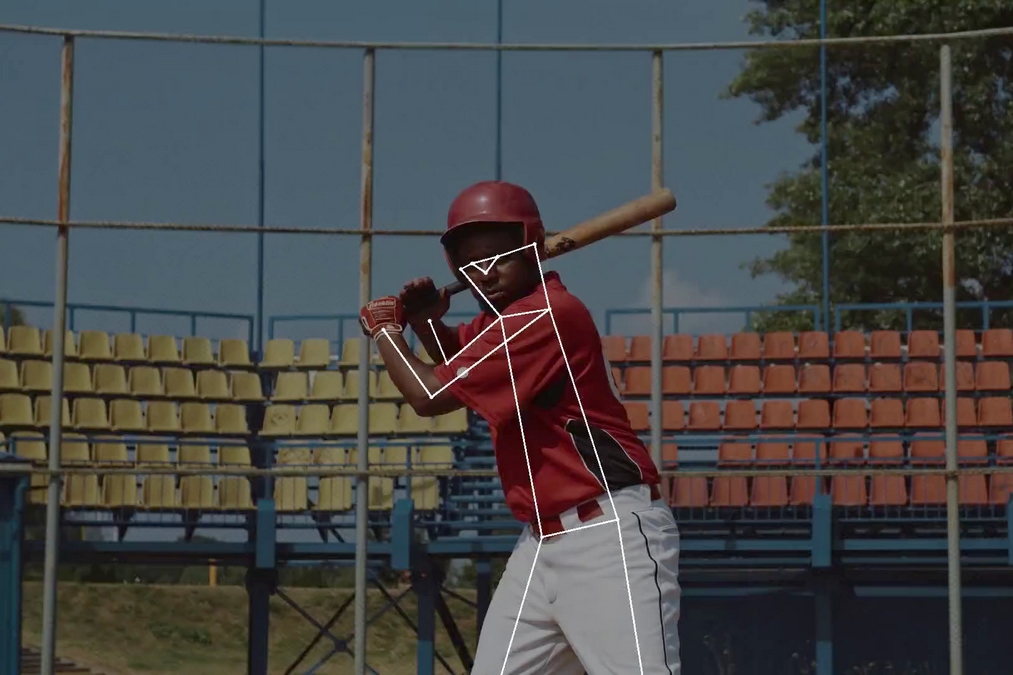
AI-Powered Wearables and Devices
AI-powered wearables and devices have revolutionized the way athletes track and manage their recovery. These technologies provide real-time insights, actionable recommendations, and instant feedback. Here are some examples of AI-powered wearables and devices used in athlete recovery:
1. Smart Recovery Bands
Smart recovery bands utilize AI algorithms to monitor an athlete’s recovery status by analyzing heart rate variability, oxygen saturation, and other physiological markers. These bands provide real-time feedback on recovery readiness, allowing athletes and coaches to adjust training intensity and recovery protocols accordingly.
2. Sleep Trackers
AI-enhanced sleep trackers use sensors to monitor an athlete’s sleep quality, duration, and stages. By analyzing sleep data, these trackers provide personalized insights and recommendations for optimizing sleep patterns, such as adjusting bedtime routines or creating a sleep-friendly environment.
3. Nutrition Apps
AI-powered nutrition apps help athletes track their dietary intake, analyze nutritional content, and receive personalized meal recommendations. These apps consider an athlete’s training load, recovery goals, and dietary preferences to ensure optimal nutrition for enhanced recovery and performance.
Challenges and Limitations of AI in Athlete Recovery
While AI brings significant benefits to athlete recovery, there are also challenges and limitations to consider. Some of these include:
- Data Privacy and Security: When it comes to collecting and storing athlete data, concerns about privacy and data security arise. Therefore, it is crucial to implement proper measures to safeguard sensitive information.
- Individual Variability: Athletes possess unique physiological and psychological characteristics that must be considered. AI algorithms need to account for this variability to deliver accurate and personalized recommendations.
- Human Expertise: It is important to view AI technology as a tool that enhances human expertise rather than replacing it entirely. Coaches, trainers, and healthcare professionals play a vital role in interpreting AI-generated insights and tailoring recovery strategies accordingly.
- Cost and Accessibility: The implementation of AI technology can be expensive, and not all athletes and teams may have equal access to these resources. Thus, ensuring affordability and accessibility is essential to promote widespread adoption.
AI in Nutrition for Athletes
Nutrition plays a critical role in the performance, recovery, and overall well-being of athletes. In recent years, the field of sports nutrition has witnessed a significant transformation due to the integration of artificial intelligence (AI) technologies. AI has revolutionized the way athletes approach their nutrition, offering personalized and data-driven insights to optimize their performance and achieve their goals.
Challenges in Traditional Approaches to Athlete Nutrition
1. Limitations of Conventional Nutrition Strategies
Traditional approaches to athlete nutrition often rely on generalized guidelines and one-size-fits-all recommendations. These methods fail to address the unique requirements of individual athletes, resulting in suboptimal outcomes. Athletes have diverse body compositions, metabolic rates, training intensities, and performance goals. Therefore, a personalized approach is necessary to unlock their full potential.
2. Individualized Nutritional Needs
AI technologies enable precise and individualized assessment of an athlete’s nutritional needs. Furthermore, by leveraging machine learning algorithms, AI platforms can analyze vast amounts of data, including an athlete’s body composition, performance metrics, dietary preferences, and genetic profiles. Consequently, this data-driven approach allows for customized nutrition plans that optimize performance and cater to the specific needs of each athlete.
3. Real-Time Monitoring and Feedback
AI-powered wearable devices and sensors offer real-time monitoring of an athlete’s biometric data, such as heart rate, body temperature, and hydration levels. This data is seamlessly integrated with AI platforms, providing instant feedback and actionable insights. Athletes can make informed decisions regarding their nutrition and training strategies, adapting in real-time to achieve optimal performance and recovery.
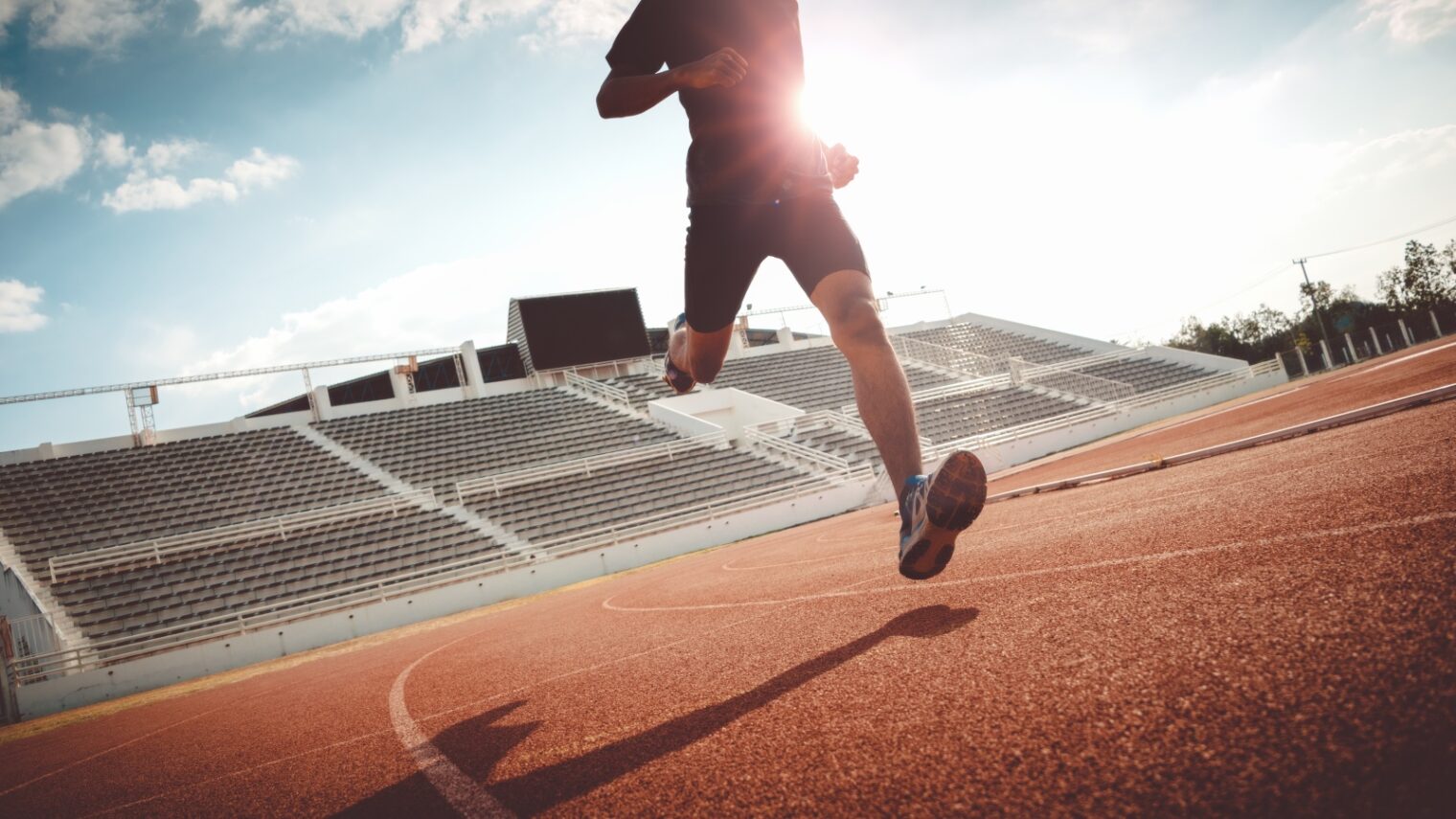
How AI is Revolutionizing Athlete Nutrition
1. AI-Driven Dietary Assessment
AI technologies simplify the process of dietary assessment for athletes. Instead of relying on self-reported food logs, which can be prone to inaccuracies, AI-powered applications utilize computer vision and natural language processing to analyze food images and provide precise nutrient composition. This automated approach saves time, enhances accuracy, and enables athletes to make better-informed choices regarding their food intake.
2. Personalized Meal Planning and Nutrient Optimization
AI platforms create personalized meal plans based on an athlete’s nutritional requirements, training schedule, and dietary preferences. These platforms take into account factors such as macronutrient ratios, caloric needs, and nutrient timing to optimize performance and recovery. Athletes can access meal recommendations tailored to their specific goals, ensuring they consume the right nutrients at the right times.
3. Monitoring and Tracking Performance Indicators
AI technologies enable comprehensive monitoring and tracking of an athlete’s performance indicators. By integrating data from wearables, such as heart rate monitors and GPS trackers, with nutritional information, AI platforms can identify patterns, correlations, and performance trends. Athletes and their coaches can leverage this data to make data-driven adjustments to training, nutrition, and recovery strategies for continuous improvement.
Benefits and Applications of AI in Athlete Nutrition
1. Enhanced Performance and Competitive Edge
AI-powered nutrition optimization helps athletes maximize their performance potential. Additionally, by providing personalized nutritional recommendations, athletes can achieve the optimal balance of macronutrients and micronutrients for their specific needs. As a result, this precision leads to enhanced energy levels, improved recovery times, and increased endurance, ultimately giving athletes a competitive edge in their respective sports.
2. Injury Prevention and Rehabilitation
AI-driven nutrition plans can contribute to injury prevention and support the rehabilitation process. Moreover, by monitoring an athlete’s nutrient intake and supplementing with specific nutrients known for their healing properties, AI platforms can aid in reducing inflammation, promoting tissue repair, and accelerating recovery. Consequently, this targeted approach minimizes the risk of injuries and facilitates the return to peak performance after setbacks.
3. Maximizing Training Adaptation and Recovery
Optimal nutrition is crucial for maximizing training adaptation and recovery. AI technologies assist athletes in identifying the ideal nutrient timing and composition to support muscle growth, reduce muscle soreness, and optimize recovery processes. By leveraging AI-driven recommendations, athletes can make the most of their training sessions, allowing for more efficient progress and adaptation.
Potential Future Developments and Implications
1. Advancements in Wearable Technology
The evolution of wearable technology continues to shape the future of athlete nutrition. Advanced sensors and devices offer more accurate and comprehensive data, including blood biomarkers, hormonal profiles, and sleep patterns. AI algorithms will leverage this wealth of information to provide even more precise and individualized recommendations for athletes, pushing the boundaries of performance optimization.
2. Integration of AI and Biometric Data
AI algorithms will further integrate biometric data with nutritional insights. By analyzing an athlete’s physiological responses to different dietary interventions, AI platforms can identify optimal nutritional strategies for specific performance outcomes. This integration will allow athletes to fine-tune their nutrition plans based on real-time biometric feedback, optimizing their performance on a continual basis.
3. Precision Nutrition and Genetic Profiling
The combination of AI and genetic profiling holds great promise for precision nutrition in athletes. By analyzing an athlete’s genetic markers, AI algorithms can provide insights into how their body responds to different nutrients, identify potential deficiencies or intolerances, and optimize their nutrition plans accordingly. This personalized approach takes into account an athlete’s genetic predispositions, further enhancing their performance potential.
Conclusion
Artificial intelligence has become a game-changer in the field of sports performance tracking. Through AI-driven data collection, enhanced performance monitoring, injury prevention, and game strategy optimization, athletes and coaches are empowered with valuable insights and tools to maximize their performance. As the sports industry continues to embrace AI technology, we can expect further advancements that will shape the future of sports.
FAQs – AI in Sports: How AI is Changing the Way We Track Athlete Performance
1. Can AI replace human coaches?
No, AI cannot replace human coaches entirely. AI technology serves as a valuable tool that supports coaches in decision-making and provides insights. Human expertise and intuition are still crucial in understanding the nuances of sports.
2. Is AI only beneficial for professional athletes?
AI has benefits for athletes at all levels, from amateurs to professionals. It helps individuals track their progress, identify areas for improvement, and make data-driven decisions to enhance their performance.
3. Are there any potential risks associated with AI in sports?
Privacy concerns and overreliance on technology are potential risks associated with AI in sports. It is important to strike a balance and ensure ethical practices are followed in data collection, analysis, and decision-making.
4. How does AI contribute to injury prevention?
AI algorithms can analyze an athlete’s movements and biomechanics to detect patterns that may lead to injuries. Coaches and trainers receive alerts and can take proactive measures to prevent injuries, such as modifying training routines or correcting techniques.
5. Will AI change the way fans experience sports?
AI has the potential to transform the fan experience by offering personalized content, immersive experiences through VR and AR, and providing real-time insights and statistics during matches. This can enhance fan engagement and enjoyment.




